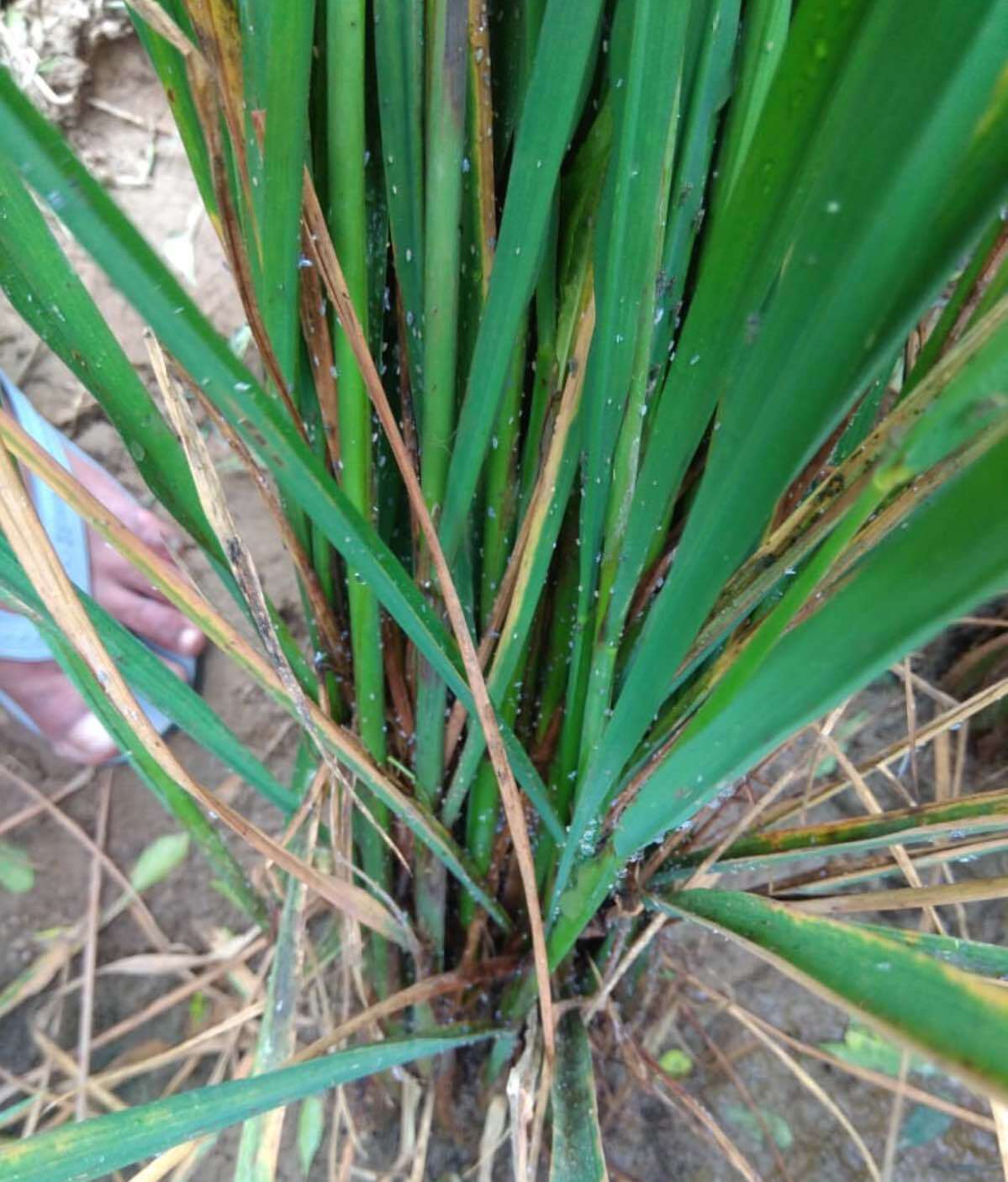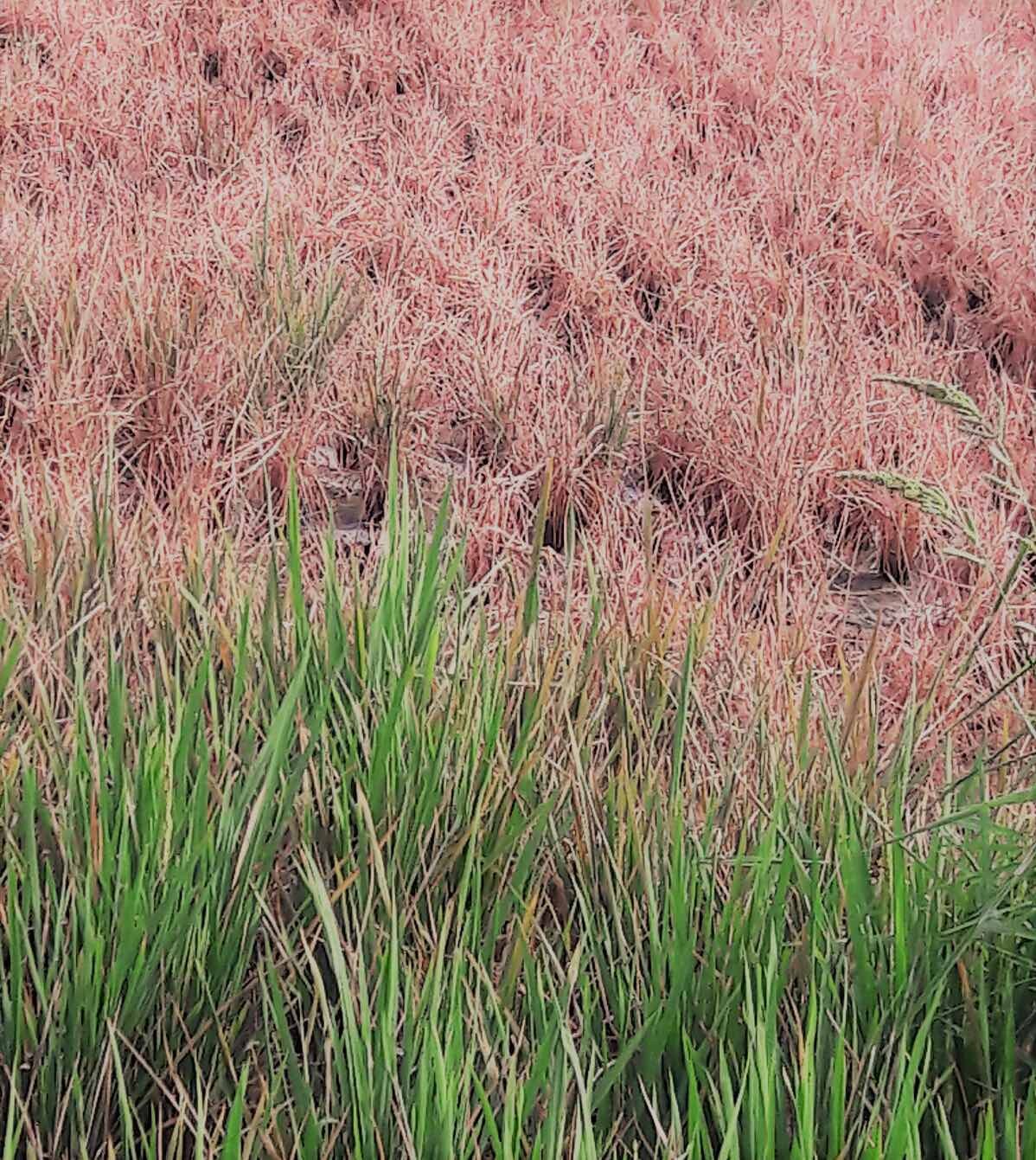Sauterelle
Rice and other grasses depending on the species
Planthoppers and leafhoppers are serious pests to rice and have worldwide distribution. Leafhoppers feed on rice leaves and other parts of plants, which causes significant direct and indirect damage. Adult planthoppers develop various distinct wings that affect their ability to migrate. The initial stages of infestations usually occur at night during periods of hot and humid weather conditions. A low number of migrated adult females insert their eggs into leave tissues. Nymphs develop quickly and large populations can grow fast.
SymptomsAt low infestation levels: Yellow patches appear sporadically along leaves and sooty mold is formed at the base of infested plants, where planthoppers are usually found.
At medium infestation levels: Whole plants turn yellow and begin to dry. As time progresses, the plants turn brown and dry up. Small brown zones of completely dried plants will be noticeable in several regions throughout the field. This is known as “hopper burn”.
At high infestation levels: Newly formed brown patches of dry plants connect which results in loss of large parts of the field.
Calendrier: Il est plus facile et plus rentable de surmonter les infestations au cours des premières étapes. Surveillez régulièrement le champ et recherchez les signes ci-dessus.
Maintenez un couvert végétal en bonne santé en évitant les longues périodes de temps où les plantes manquent d’eau, d’irrigation adéquate ou de fertilisation, ce qui leur cause un stress. Des auvents plus sains risquent moins d’être attaqués.
Fertilisation adéquate : La surutilisation des engrais azotés n’augmente souvent pas les rendements de manière significative et peut augmenter le nombre de nouvelles infections dues à l’explosion de riz.
Assainissement: Gardez l’environnement proche des cultures en éliminant les mauvaises herbes, les débris de plantes, les parties endommagées, la croissance indésirable des plantes et les plantes à proximité qui ne sont ni cultivées ni protégées.
Les produits utilisés dans une ou plusieurs régions du monde peuvent contenir les ingrédients suivants :
Flonicamid, buprofezine, pymétrozine, bifenthrine, deltametrin, lambda cyhalothrine, imidaclopride, thiaméthoxame, acétamipride, clothianidine, chlorpyrifos, diméthoate, et fipronil.
huile de neem et huile minérale.
*Names marked in red are considered to be highly poisonous to beneficial insects.
*Names marked in green are considered to be organic and IPM (integrated pest management) compatible.
Image Gallery

